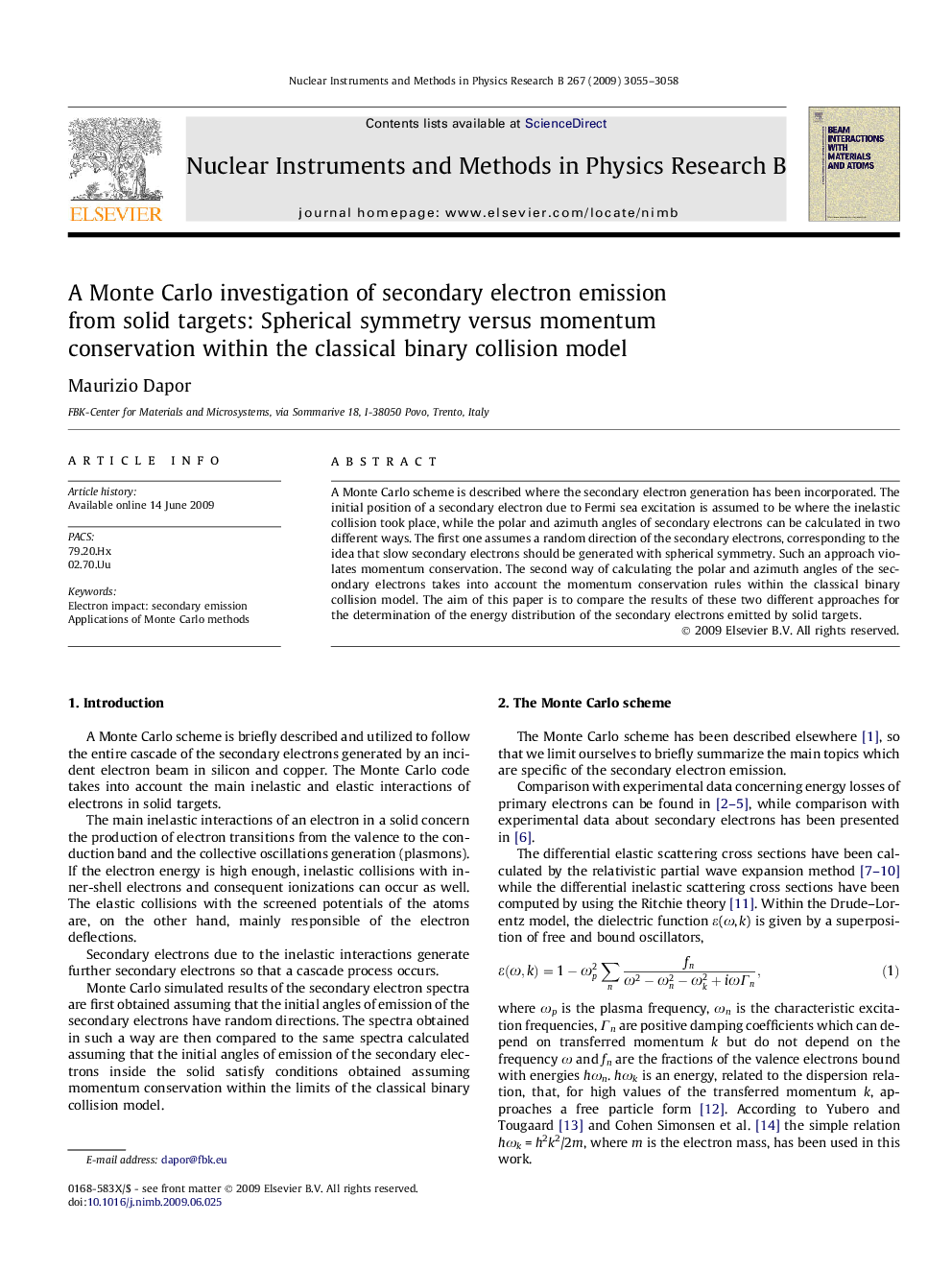| Article ID | Journal | Published Year | Pages | File Type |
|---|---|---|---|---|
| 1686990 | Nuclear Instruments and Methods in Physics Research Section B: Beam Interactions with Materials and Atoms | 2009 | 4 Pages |
A Monte Carlo scheme is described where the secondary electron generation has been incorporated. The initial position of a secondary electron due to Fermi sea excitation is assumed to be where the inelastic collision took place, while the polar and azimuth angles of secondary electrons can be calculated in two different ways. The first one assumes a random direction of the secondary electrons, corresponding to the idea that slow secondary electrons should be generated with spherical symmetry. Such an approach violates momentum conservation. The second way of calculating the polar and azimuth angles of the secondary electrons takes into account the momentum conservation rules within the classical binary collision model. The aim of this paper is to compare the results of these two different approaches for the determination of the energy distribution of the secondary electrons emitted by solid targets.
